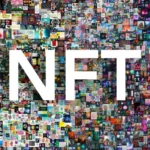Starting a blockchain-based business offers immense opportunities in today’s rapidly evolving digital landscape.
Blockchain technology, with its decentralized and secure nature, is revolutionizing industries such as finance, healthcare, supply chain, and more.
However, launching a successful blockchain venture requires strategic planning, technical expertise, and a clear understanding of the regulatory environment.
In this guide, we will walk you through the essential steps to start a blockchain business—from identifying market opportunities to choosing the right platform, developing your product, and ensuring legal compliance.
Whether you’re looking to create a decentralized finance (DeFi) application, an NFT marketplace, or a blockchain consulting service, this article provides a comprehensive roadmap to help you turn your idea into a thriving blockchain-based business.
What Is a Blockchain-Based Business?
A blockchain-based business leverages blockchain technology to deliver products or services. These businesses typically rely on decentralized systems, smart contracts, and tokenization to provide greater transparency, security, and efficiency.
Examples of Blockchain Business Models:
- Decentralized Finance (DeFi) Platforms
- Cryptocurrency Wallets
- NFT Marketplaces
- Blockchain Consulting
- Supply Chain Solutions
- Healthcare Data Security Apps
- Digital Identity Verification Systems
Step 1: Identify a Problem Blockchain Can Solve
Before diving into development, you need to pinpoint a real-world problem that blockchain is uniquely positioned to solve.
Questions to Ask:
- Is decentralization a better alternative to current solutions?
- Can trustless systems add value to the industry?
- Does the solution require immutability or data transparency?
Focus on industries where blockchain can reduce fraud, automate transactions, or improve traceability.
Step 2: Choose the Right Blockchain Platform

Not all blockchain platforms are the same. Your choice should align with your business goals and technical needs.
Popular Blockchain Platforms:
| Platform | Use Cases | Programming Language | Consensus Mechanism |
|---|---|---|---|
| Ethereum | DApps, Smart Contracts, NFTs | Solidity | Proof of Stake |
| Binance Smart Chain | DeFi, Token-based Projects | Solidity | Proof of Staked Authority |
| Solana | High-speed dApps, Games | Rust, C | Proof of History |
| Hyperledger Fabric | Enterprise Solutions | Go, Java | Pluggable |
| Polygon | Layer 2 Ethereum Scaling | Solidity | Proof of Stake |
Step 3: Define Your Business Model
There are many ways to monetize a blockchain-based business. You need to define how your business will generate revenue and deliver value.
Common Blockchain Business Models:
- Token-Based Economy: Create and sell tokens for platform access.
- Transaction Fees: Charge a small fee for every transaction on your network.
- Subscription Services: Offer paid plans for premium features.
- Marketplace Commission: Earn a percentage of sales on your platform.
- B2B SaaS Model: Provide blockchain-as-a-service for enterprises.
Step 4: Assemble a Skilled Team
Building a blockchain product requires a multidisciplinary team. Hiring or partnering with experts in various domains is critical for execution.
Key Roles:
| Role | Responsibilities |
|---|---|
| Blockchain Developer | Smart contracts, tokenomics, blockchain architecture |
| Frontend Developer | UI/UX for web and mobile apps |
| Backend Developer | APIs, server-side logic, and database management |
| Project Manager | Workflow coordination, timeline management |
| Legal Consultant | Regulatory compliance, smart contract legality |
| Marketing Specialist | Community growth, PR, content, and campaign management |
Step 5: Ensure Legal Compliance
Blockchain is still a regulatory gray area in many countries. Staying compliant is non-negotiable if you want to avoid costly legal troubles.
Legal Considerations:
- Jurisdiction: Choose a country with blockchain-friendly laws.
- Token Classification: Is your token a utility, security, or governance token?
- Licensing: Check if financial licenses are required.
- KYC/AML Regulations: Needed for businesses dealing with money transfers or exchanges.
- Intellectual Property: Secure your source code and proprietary solutions.
Step 6: Develop a Minimum Viable Product (MVP)

Start lean. Your MVP should focus on core functionalities that solve your users’ main problems. Gather user feedback early and iterate quickly.
MVP Development Checklist:
- Smart contracts deployed and audited
- Frontend and backend fully functional
- Token or wallet integration (if applicable)
- Basic user dashboard or admin panel
- Bug testing and security audits
Use agile development to adapt as you go.
ALSO READ: How to Gain the AI Edge in Ecommerce: Why It Matters and How to Achieve It
Step 7: Launch and Grow Your Community
In blockchain, your community is your lifeline. From funding to feedback, early adopters play a crucial role in the ecosystem.
Growth Strategies:
- Whitepaper & Website: Clearly communicate your vision and value.
- Airdrops: Distribute free tokens to incentivize early users.
- Social Media Presence: Focus on Twitter, Discord, and Telegram.
- Partnerships: Collaborate with other Web3 projects.
- Content Marketing: Publish blogs, case studies, and explainer videos.
Step 8: Secure Funding
You’ll likely need capital to scale development and operations. There are blockchain-specific funding options that go beyond traditional routes.
Funding Options for Blockchain Startups:
| Funding Source | Description |
|---|---|
| Venture Capital | Equity-based funding from crypto-focused VCs |
| Token Sale (ICO/IDO/IEO) | Raise funds by selling native tokens |
| Grants | Non-dilutive funding from blockchain foundations |
| Crowdfunding | Community-backed funding via platforms like Kickstarter |
| Incubators/Accelerators | Access to mentorship, resources, and seed funding |
Step 9: Launch Token (If Applicable)
Tokens are at the heart of many blockchain businesses, but they must be thoughtfully designed and distributed.
Token Launch Checklist:
- Define tokenomics: supply, utility, staking, and rewards
- Select launchpad or DEX for initial offering
- Conduct security audit of token contract
- Build liquidity pool on decentralized exchanges
- List on platforms like CoinMarketCap and CoinGecko
Step 10: Maintain, Improve, and Scale
Blockchain is evolving fast. Stay competitive by continuously improving your product and scaling your user base.
Scaling Considerations:
- Layer 2 Integration: Improve transaction speed and reduce gas fees.
- Interoperability: Allow your platform to communicate with other chains.
- Governance: Create a DAO to involve your community in decision-making.
- Analytics Tools: Monitor user behavior and chain performance.
- Security Enhancements: Regular audits and penetration testing.
Additional Topics to Consider

To make your blockchain business successful long-term, you should also focus on:
Tokenomics Design
Designing a sustainable token economy is crucial for retaining users and investors.
| Tokenomics Factor | Importance |
|---|---|
| Supply Cap | Prevents inflation and maintains scarcity |
| Staking Rewards | Encourages users to lock tokens |
| Deflationary Tactics | Burns or fees to reduce supply |
| Governance Utility | Enables holders to vote on decisions |
| Vesting Schedules | Prevents early dumps by founders or VCs |
Decentralized Governance
Forming a DAO (Decentralized Autonomous Organization) allows your user base to make decisions transparently and fairly.
- Smart contract-based voting
- Token-weighted decision power
- Community proposals and feedback loops
Blockchain Security
Security breaches can permanently damage your business.
- Perform regular smart contract audits
- Use multi-sig wallets
- Implement 2FA and cold storage for sensitive data
- Partner with third-party security firms
Environmental Considerations
With criticism around blockchain’s energy use, especially for PoW networks, you may want to:
- Choose eco-friendly blockchains (e.g., Tezos, Algorand)
- Offset carbon via blockchain-based sustainability platforms
- Educate users on your low-energy impact
ALSO READ: The Ultimate Guide to Streaming Sports with IPTV: How Norsk IPTV Changes the Game
Conclusion
Starting a blockchain-based business is not just a trend—it’s a transformative move into the future of digital trust, transparency, and decentralization.
But like any business, success doesn’t come from hype alone. It requires a deep understanding of technology, clear business goals, a solid legal foundation, and an engaged community.







